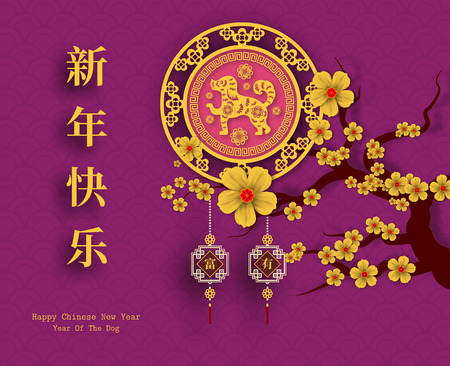1. Introduction: Understanding Superstitions Across Cultures
Superstitions have long woven themselves into the fabric of societies around the world, shaping beliefs, behaviours, and daily routines in subtle yet profound ways. At their core, superstitions are traditional beliefs or practices that arise from a perceived supernatural influence on everyday events—an attempt to bring order or predictability to an often uncertain world. While their manifestations differ across cultures and eras, their underlying purpose remains remarkably consistent: to ward off misfortune and invite good fortune.
In Chinese society, one of the most enduring and systematised forms of superstition is Feng Shui. Rooted in ancient philosophies and cosmology, Feng Shui translates literally as “wind” and “water,” symbolising the invisible forces thought to bind the universe, earth, and humanity together. This intricate art governs everything from architecture and city planning to interior design, all with the goal of harmonising individuals with their environment for prosperity, health, and happiness.
Meanwhile, England boasts its own rich tapestry of superstitions, many tracing back to medieval times. From avoiding ladders and black cats to saluting magpies or knocking on wood, these customs may seem quaint or whimsical today but were once considered crucial safeguards against ill fortune. English superstitions reflect the nation’s unique blend of folklore, religious influence, historical anxieties, and pragmatic wisdom passed down through generations.
This article embarks on a comparative journey through time, tracing the parallel development of Feng Shui in China and superstitious practices in England from medieval origins to the present day. By mapping out key milestones and cultural shifts in both traditions, we can better appreciate not only their differences but also their shared human impulse—to make sense of life’s uncertainties through ritual and belief. Join us as we unravel this timeline of tradition and transformation.
2. Medieval Beginnings: The Emergence of Feng Shui and English Folk Beliefs
The medieval era marked a formative period for both Feng Shui in China and the rich tapestry of folk superstitions that permeated English society. In this epoch, communities across East and West were profoundly shaped by their landscapes, climate, and collective anxieties, leading to the emergence of distinctive yet sometimes surprisingly parallel belief systems.
The Historical Roots of Feng Shui
Feng Shui, literally “wind-water,” can be traced back to at least the Han Dynasty (206 BCE – 220 CE), but its principles crystallised further during China’s Tang (618–907) and Song (960–1279) dynasties. Medieval practitioners believed that the careful orientation of buildings, tombs, and even cities could harness vital energies—qi—for harmony, prosperity, and protection from misfortune. Its influence extended beyond architecture to daily life, reflecting a worldview where human fate was intimately entwined with natural forces.
Medieval English Superstitions: A World of Signs and Omens
Meanwhile, in medieval England (circa 5th to 15th century), folklore and superstition flourished as a means to interpret an unpredictable world. Everyday occurrences—black cats crossing one’s path, breaking mirrors, or the direction of a crow’s flight—were imbued with meaning. These beliefs often governed personal behaviour and community rituals, offering comfort or warning in a landscape fraught with uncertainty.
Comparative Table: Early Societal Roles
| Feng Shui (China) | English Superstitions | |
|---|---|---|
| Main Focus | Harmonising human activity with natural energies (qi) | Deciphering omens; appeasing supernatural forces |
| Societal Role | Guided city planning, architecture, burial practices | Influenced daily routines, agricultural practices, rituals |
| Environment & Belief Link | Landscape features determined auspiciousness; geography seen as destiny | Natural events interpreted as messages; environment seen as source of supernatural signs |
| Main Practitioners | Geomancers (feng shui masters) | Cunning folk, wise women, local elders |
Interplay Between Environment and Belief Systems
Both traditions reveal societies seeking order in nature’s unpredictability. While Chinese geomancy developed sophisticated systems to channel positive energy through spatial arrangement, the English turned to charms and rituals rooted in their immediate surroundings. In both cultures, belief served as a tool for understanding—and influencing—the invisible forces shaping everyday life.

3. Evolving Traditions: Key Milestones and Shifting Practices
The story of both Feng Shui and English superstitions is marked by continual adaptation, as each tradition responded to cultural, political, and scientific shifts from the Middle Ages through to the Renaissance. By tracing their evolution, we see a tapestry of belief that reflects wider societal change.
Medieval Foundations: Rituals Rooted in Worldview
In medieval China, Feng Shui was intrinsically tied to imperial authority and cosmology. Palaces and tombs were aligned with celestial patterns, emphasising harmony between heaven and earth. Meanwhile, across medieval England, everyday life was guided by folklore: horseshoes above doors for luck, magpies foretelling fortune or misfortune, and rituals marking seasonal transitions. These superstitions were woven into the fabric of rural and urban life alike.
Renaissance Transformations: Reason Meets Ritual
The Renaissance brought seismic changes on both sides of the world. In China, new interpretations of geomancy emerged as Confucian scholars debated the metaphysical underpinnings of Feng Shui. Manuals were standardised, and techniques refined. In England, the rise of humanism and scientific inquiry challenged long-held beliefs. Witchcraft trials, once rampant, began to wane. Yet paradoxically, practices such as touching wood for luck or reading omens in tea leaves found new life among the gentry and merchant classes.
Pivotal Moments: Shifts in Interpretation
Throughout these centuries, both traditions experienced pivotal reinterpretations. In China, the Ming dynasty’s embrace of Neo-Confucianism brought rational analysis to Feng Shui principles while maintaining their mystical core. In England, the Enlightenment cast a sceptical eye on superstition but never fully displaced it; even Isaac Newton reportedly avoided walking under ladders. Thus, both cultures found ways to adapt ancient customs within modernising societies.
This comparative journey through time reveals not only changing rituals but also enduring human desires—for order, protection, and meaning amid uncertainty—expressed uniquely yet recognisably on either side of the globe.
4. Modernisation and Rationalism: Surviving or Fading?
The Age of Enlightenment in the 17th and 18th centuries marked a decisive turning point for traditional beliefs on both sides of the world. In Britain, the rise of rationalism and scientific inquiry challenged the legitimacy of age-old superstitions, from omens foretelling doom to rituals believed to ward off bad luck. Similarly, in China, Western science’s growing influence during the late Qing dynasty began to question the empirical basis of Feng Shui. The tension between tradition and progress shaped public attitudes and practices in both cultures.
The Enlightenments Challenge
In England, figures such as Isaac Newton and Francis Bacon championed reason over superstition. Gradually, the authority of folklore waned in educated circles, though everyday customs persisted among the general populace. Meanwhile, Chinese scholars debated whether Feng Shui belonged in a modernising society increasingly influenced by technology and international exchange. Yet, despite these pressures, neither system vanished entirely.
Adaptation versus Decline
| Feng Shui (China) | English Superstitions | |
|---|---|---|
| Response to Rationalism | Reinterpreted as environmental psychology or design principles; continued private practice even as official recognition declined. | Became subjects of folklore studies; some superstitions faded, others transformed into harmless customs or sayings. |
| Persistence in Daily Life | Still influential in home layouts, business openings, and city planning. | “Touching wood” for luck or avoiding walking under ladders remain common habits. |
| Modern Adaptations | Marketed as lifestyle or wellness trends in global cities; integrated with contemporary interior design. | Referenced in popular media and traditions (e.g., Friday the 13th), often with humour or irony. |
A Living Heritage or a Lingering Shadow?
Towards the present day, both Feng Shui and English superstitions occupy an ambiguous space between heritage and habit. The march of science has not eradicated them but reshaped their meaning and visibility. For many Britons, superstitions are quaint reminders of a rural past; for modern Chinese communities, Feng Shui offers a bridge between ancestral wisdom and contemporary life. The survival of these beliefs reflects their ability to adapt—sometimes fading into folklore, sometimes emerging anew amidst modern anxieties.
5. Contemporary Perspectives: Legacy in Everyday Life
In the modern era, both Feng Shui and English superstitions have found new expression, subtly weaving their way into daily life, architecture, and popular culture across the UK. While the mystical origins of these traditions may seem distant from today’s rational worldview, their enduring influence is unmistakable.
The Built Environment: Old Beliefs, New Designs
Contemporary British architecture occasionally nods to superstition in much the same way as traditional Feng Shui shapes urban landscapes across Asia. In the UK, developers sometimes skip numbering a house or floor as “13,” reflecting a widespread aversion to this number rooted in medieval superstitions. Meanwhile, open-plan living spaces and the strategic placement of mirrors—ideas closely aligned with Feng Shui principles—are increasingly valued for their supposed ability to attract positive energy and create harmonious environments. Even major landmarks, such as The Shard in London, incorporate elements designed to harness natural light and vistas, echoing concepts reminiscent of Qi flow.
Daily Routines: Subtle Rituals and Habits
Superstitions endure in everyday British habits: people still avoid walking under ladders, salute magpies with a rhyme, or touch wood for luck—gestures steeped in centuries-old beliefs. Similarly, among those who embrace Feng Shui in the UK, arranging furniture to face doors or placing plants at certain points in a room has become common practice. These actions reflect an ongoing desire to shape fate and fortune through environment and ritual.
Cultural Reflections: From Tradition to Trend
Both systems have evolved beyond folk custom into cultural reference points. British television and literature frequently play on superstitious themes—from Friday the 13th dramas to characters consulting omens—while Feng Shui enjoys popularity not only within East Asian communities but also among Britons seeking holistic well-being. High street retailers now offer “lucky” home accessories and guides on space-clearing—a testament to how age-old wisdom adapts for contemporary tastes.
Ultimately, while scientific understanding has reshaped many attitudes towards luck and destiny, the persistence of these traditions speaks to a uniquely human impulse: to find meaning in the unseen forces that shape our lives. Whether through a carefully positioned horseshoe over a threshold or a mindful arrangement of one’s living room, both Feng Shui and English superstitions remain quietly influential, bridging past and present within the fabric of British society.
6. Conclusion: Parallels, Contrasts, and the Enduring Nature of Belief
As we trace the intertwined histories of Feng Shui and English superstitions, striking parallels and vivid contrasts emerge. Both traditions, originating centuries apart in distinct cultures, reveal a shared human desire to harmonise with unseen forces—whether they be energies flowing through ancient Chinese landscapes or omens whispered by the British countrysides folklore. The timeline shows that while Feng Shui evolved as a systematic practice rooted in cosmology and architecture, English superstitions often took shape as folk wisdom, expressed in everyday rituals and warnings about black cats, ladders, or broken mirrors.
Yet, despite these differences in form and context, both belief systems have endured well into the modern era. Their persistence speaks to an enduring need for reassurance and agency in the face of uncertainty. Even today, city dwellers in London might avoid the number thirteen when choosing a flat, just as homeowners in Hong Kong consult Feng Shui masters before renovations. In essence, both East and West continue to negotiate their relationship with the invisible—seeking luck, warding off misfortune, and finding meaning beyond the tangible.
In reflecting on their journeys from medieval times to our contemporary world, it becomes clear that these traditions do more than simply echo old fears; they provide cultural continuity and a sense of identity. As society grows more rational on the surface, the roots of superstition run deep—reminding us that belief in the unseen is not just a relic of the past but a vital part of how communities across continents make sense of their place in an ever-changing world.


